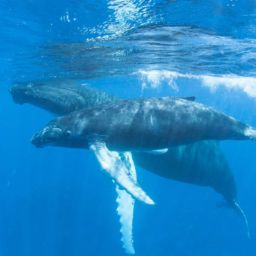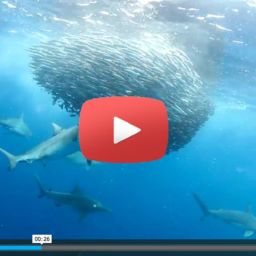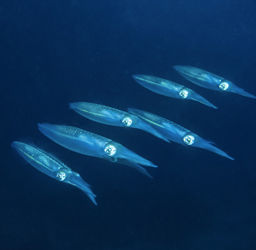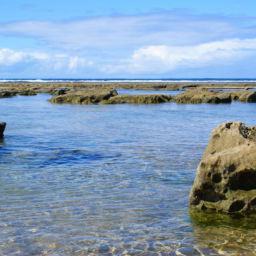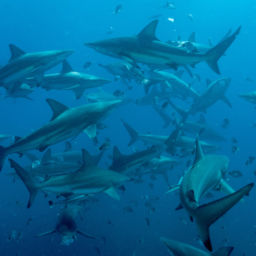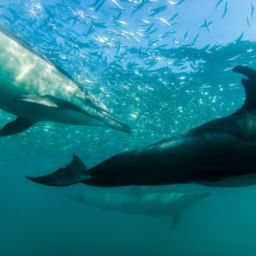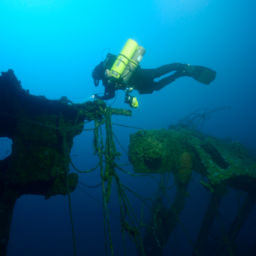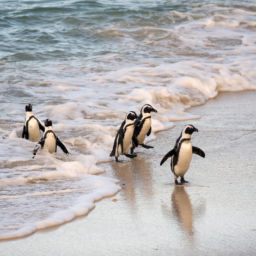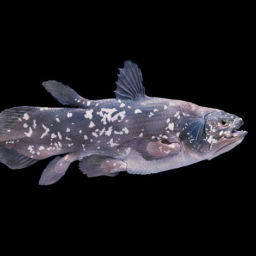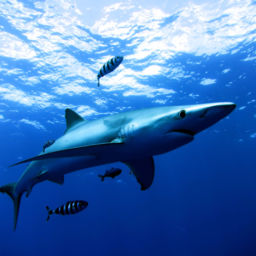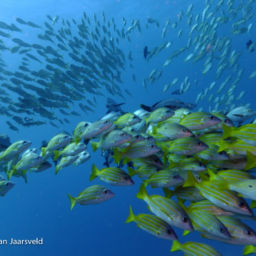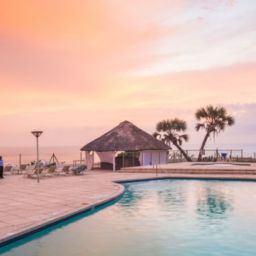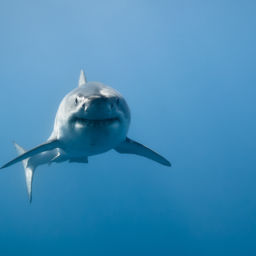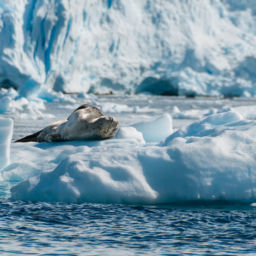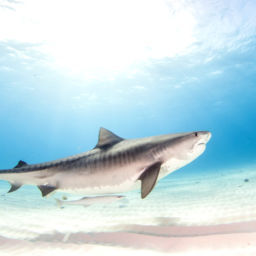But the Shoal is also famous as the final resting place of the Produce, a Norwegian cargo carrier that has become one of South Africa’s most rewarding wreck sites. The Shoal’s treacherous topography has been responsible for many shipwrecks over the years, and on August 11, 1974, the 550-foot Produce fell foul of the area’s shallow pinnacles. The razor-sharp reef punctured the hull and the Produce sank quickly, its crew saved by the efforts of local fishermen, who launched a haphazard armada to rescue those onboard the stricken ship. A beautifully intact wreck, today the Produce thrives with life, from the spectacularly colored and rarely seen harlequin anthias to a resident population of the world’s largest reef-dwelling bony fish, the brindle bass.
Launching at Aliwal Shoal is not for the faint-hearted. Normally, it’s a mad, white-knuckle adrenaline rush, which starts with the skipper searching for his gap between the towering breakers. Once spotted, the inflatable takes off for the safer waters of backline at a speed that is both terrifying and exhilarating. Our launch was comparatively easy: the conditions were glassy calm and the ocean spread before us like watered silk. It took just 15 minutes to reach the dive site, and another 5 before all eight of the divers were sitting on the pontoons awaiting the signal to back roll into the water. From the surface, the limpid indigo of the ocean beneath the hull hinted at spectacular visibility, and anticipation for the dive ahead coursed like electricity through my veins. Soon, the skipper was counting down from three, and simultaneously, we all rolled into the water and straight into a negative descent. By the time I oriented myself, the dark shadow of the wreck was already visible against the luminescence of the sand around it. As we continued downwards, the shadow took on more and more definition until, eventually, we arrived at the ship’s bow.
Over the years, the Produce’s mid-section has deteriorated significantly and the wreckage there is now almost level with the seafloor. However, its bow and stern are still impressively intact, and the sheer size of the hull as it towered above us was both impressive and eerily atmospheric. At its deepest point, the Produce lies in approximately 104 feet (32 m) of water, and with visibility pushing 80 feet, I could see clearly from the upper deck down to the seafloor, where the sand spread in silver ripples away from the shadow of the hull. The ship itself was a masterpiece of vibrant color, from the coral growth etching its way across the fractured steel to the clouds of pink and orange anthias moving in solid shoals over its colossal skeleton. The dark nooks and crannies of the top deck and the cavernous hold revealed the hiding places of juvenile lionfish and inquisitive geometric morays, while in the flattened mid-section we spotted a beautiful leopard ray, which regarded us warily as we descended for a closer look. So focused were we on the wreck that I almost missed the school of Cape salmon that passed by in the blue, their silvered bodies refracting all the colors of the rainbow as their scales caught the sunlight filtering from the surface.
The real highlight of the Produce, however, is its resident population of brindle bass, known elsewhere in the world as the giant grouper or Queensland groper. On my first dive to the wreck, I knew nothing of these enormous fish; as a result, I got the shock of my life when I peered into the forward hold and saw a giant eye staring straight back at me. Once my heart rate had returned to normal, I took a closer look. Open at both ends, the hold was like a vast tunnel, edged with struts that made the space resemble a whale’s ribcage. Suspended inside was the largest fish I had ever seen, its silhouette almost filling the space completely. Despite weighing up to 880 pounds, the brindle bass of the Produce are masters of buoyancy control, and this one hung motionless save for the occasional, almost imperceptible, movement of its pectoral fins. With its petulant expression, its grey, mottled skin, and its staggering size, it was a truly magnificent creature. We saw two more that day on the Produce, one of which was so huge that it seemed jarringly out of proportion with the stern of the ship where we found it. To see them is quite surreal, simply because it takes the brain several seconds to appreciate just how enormous they really are.
Because the Produce is a relatively deep wreck, it is important to stay cognizant of depth, air and time; properly planned dives, partially dedicated to shallower areas, can last 30 minutes. Local authorities no longer permit penetration, even with appropriate qualifications. This is meant first to preserve the wreck, which is liable to accelerated deterioration if divers’ air bubbles become trapped inside, and second, to prevent the brindle bass populations from being disturbed. These fish are protected in South Africa due to their vulnerable status, and rely on the wreck to provide a favorable enclosed habitat. Conditions on the Produce can vary greatly, from negligible currents and up to 100 feet of visibility, to almost zero visibility and screaming currents, which make it impossible to stay on the wreck. Aliwal Shoal’s water temperatures range from 62 to 80 degrees Fahrenheit (17 to 27 C), with the warmer season from November to May. If you decide to explore the Produce for yourself, go with an experienced local operator who knows the site well, and can anticipate whether or not conditions are acceptable. The wait for good conditions is well worth it, because when they do fall into place, the Produce is quite simply exceptional.


